Wondering how to tell if a coin is an error or not? Do you know the basic “signs” you should be looking for on U.S. error coins?
Following is a list of characteristics that are most commonly found on U.S. error coins. You’ll want to look for these very specific features first when trying to determine if you have an error coin on your hands or not.
Specifically, I’m going to tell you:
- What features are commonly found on error coins.
- Which error coins you should hold onto for their potential value.
While I can’t guarantee that all of the coins you find which exhibit these distinctive characteristics will be U.S. error coins… this Coin Errors List summarizes the types of things you should be looking for.
Use it to hone in on the coins in your collection that have the possibility of being legit U.S. Mint errors.
Coin Errors List Of Features To Look For
#1 – Doubled Lettering Or Doubled Design Features
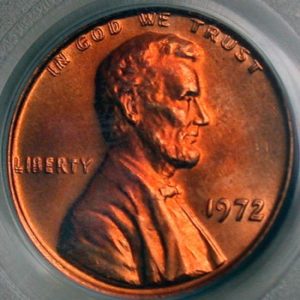
Doubling of letters, numbers, or other details on a coin can be indicative of an error.
Some of the most common areas to look for doubling on a coin are:
- The coin’s date
- Inscriptions such as “IN GOD WE TRUST,” “UNITED STATES OF AMERICA,” or “E PLURIBUS UNUM”
- Significant areas of the design — such as an eye, mouth, ear, or hair details
Although some coins with doubling aren’t necessarily errors, those that are can be quite valuable. The rarest and most popular type of doubling error is known as a doubled die. Doubled die coins are caused during the process of creating the die that turns blank coins into money.
Doubled-dies are definitely U.S. error coins that you should hold onto.
Some doubled die coins are worth more than $1,000!
NOTE: Doubled die error coins are sometimes confused with repunched mintmark error coins. However, they are not the same. The difference depends on the point at which the doubling occurred during the minting process. Specifically, a doubled die coin is created when the hub that puts the design on the die makes 2 impressions on the die at slightly different angles. A repunched mintmark coin is created when the letter punch leaves 2 impressions at different angles or slightly different locations.
#2 – An Off-Center Design
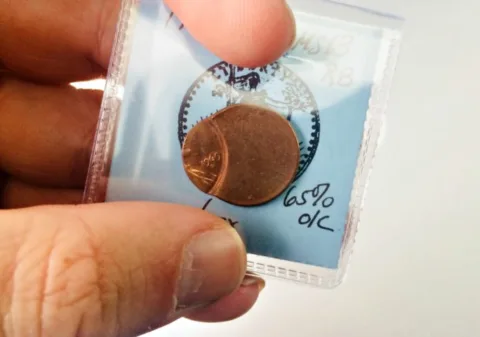
One of the most obvious types of errors occurs when a coin is struck off center.
An off-center strike appears as a crescent-shaped area of blank metal on the coin.
Sometimes, the rim — the raised lip of metal around the edge of the obverse (head’s side) or reverse (tail’s side) design — will appear to be thicker on one side of the design than the other.
Off-center coins are very common, but they are still technically errors and worth keeping.
The most drastic off-center coins are worth $50 or more!
#3 – Unusual Raised Straight Or Squiggly Lines
If you see any raised lines or markings on a coin that don’t look ordinary, they could be due to an error.

Not all raised lines are errors, however:
- Sometimes, the raised lines are caused by polishing marks transferred from the die onto the coin — these aren’t really valuable or scarce.
- Other times, raised lines are made from old or aging dies that begin to crack. When the break marks transfer onto a coin as raised lines and markings — these error coins are often quite valuable.
So, hang onto any coin you see that shows a raised marking. Then, evaluate it further to see if what you have is a type of error known as a die crack or die break.
The most bizarre die breaks are quite rare and collectible — with some worth more than $100!
NOTE: A very popular type of die crack is one that forms between the B and E of LIBERTY on the obverse of a Lincoln cent — just to the left of Lincoln. These are called BIE varieties because the small, vertical die crack takes the form of a capital letter I. BIE varieties are typically worth$5 to $10.
#4 – Missing Mintmarks, Numbers, Or Letters

A lot of people find coins that have a letter, mint mark, number, or other design element that appears to be partially (or even completely) missing.
Missing lettering and numbers are often caused by heavy, uneven wear or even someone intentionally removing the detail on that part of the coin.
Sometimes such things are normal and common. And sometimes they’re valuable errors that are worth holding aside.
Many times, a certain portion of the design is missing because foreign matter got onto the die and obscured that part of the design from being properly struck onto the blank coin. These so-called strikethrough errors that involve missing numbers, letters, or other elements are definitely coins that you should hold onto.
Strike-through error coins are usually worth more than $250!
#5 – Bubbles Or Raised Spots
Bubbles sometimes appear on coins because they’ve been exposed to intense heat — such as a fire or blowtorch. (Yes, some folks blow torch their coins — don’t ask me why!)
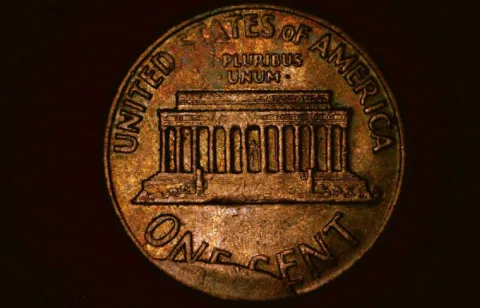
- In most cases… if you find a coin with bubbles or ripples in the metal, it’s because the coin has been damaged by heat.
- On copper-nickel clad coins… bubbles can be caused by gasses trapped between the layers of cladding.
- On pennies made since 1982… tiny bubbles and ripples are due to imperfections in bonding of the outer copper layer on the zinc core inside the coins.
The best thing to do is to hang onto all coins that have bubbles, ripples, and other raised dimples for further investigation. Bubbled coins are usually worth $10 to $50 — sometimes even more.
NOTE: Some die cracks take the apparent form of bubbles (as seen above). Such a die crack is known as a die cud and is worth about $100 and up.
#6 – Surface Areas That Have Peeled Away
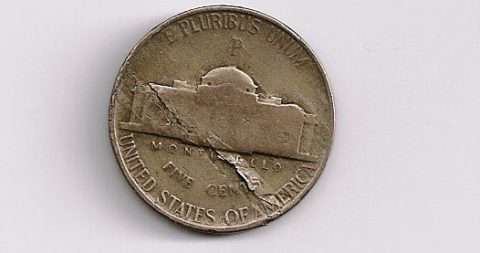
Imperfections in chemical bonding of the different layers of metal on a coin can lead to them peeling off — either during or after the minting process.
If you find a coin that seems to have layers of metal missing, hold it aside for further evaluation. You’ll need to determine it’s just environmental damage or if it’s a type of U.S. Mint mistake known as a lamination error.
Lamination errors can be worth about $10 and up.
#7 – The Wrong Color

Have you found a silver coin (like the well-known silver penny) or another coin with odd coloration?… Keep it!
That could be a valuable error — such as a coin that was struck on the wrong metal (known as a wrong planchet error).
You’ll need to have the coin professionally tested to determine if it’s a genuine error or if it was simply altered after the coin left the Mint.
Coins like this are worth checking twice — because many off-metal errors are worth $500 or more!
#8 – The Wrong Size Or Shape
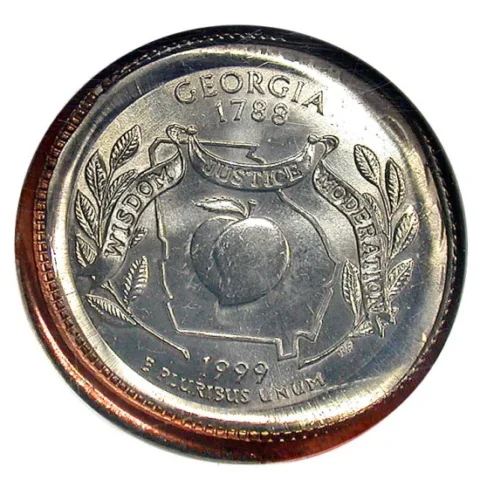
Found a penny that looks too big? Or a quarter that’s misshapen?
So many weird things can happen to a coin when mistakes take place during the minting process.
There is a wide variety of errors that include characteristics such as a coin being the wrong size or shape. A few of them are:
The bottom line is if you find a coin that is too large, too small, or not perfectly round… keep it for further investigation!
U.S. error coins like this can be worth $50 or more.
#9 – Rim Or Edge Oddities
Different kinds of errors can cause the rim or edge of a coin not to look right.

Here’s the difference between the rim vs the edge of a coin.
These are 5 of the most common types of rim errors:
These are the 2 main types of edge errors that are known to exist:
- The coin is missing the reeded edges (those little vertical lines along the edge of the coin) or edge lettering (letters that are supposed to be on the outer edge).
- The orange copper stripe is missing from the outer edge of a copper-nickel clad coin.
Keep any coin that has a weird-looking edge or rim, and take the time to check it out more closely. If the coin is a real error, it could be worth $100 — or even more!
What To Do Next… If You Think You Have Error Coins
OK, so I’ve given you a long list of U.S. error coin characteristics and helped you determine how to tell if a coin is an error or not.
Now you’ve probably got a small pile of odd-looking coins and you’re wondering what to do with them next.
Keep in mind, there’s a very good chance that most of the coins I’ve suggested you hold aside are not actual errors, but are just common damaged coins that resemble errors.
That’s because it’s not always easy to tell a valuable error coin from a regular coin with damage. (Unfortunately, many of the coins that people ask me about and believe have errors really are not errors — most are simply damaged.)
But going through these pieces to see if what you have is common coinage or truly collectible is part of the numismatic process!
- First, you’ve got to look for coins with unusual characteristics.
- Then, you’ve got to do a little research to see if you’ve found true errors or not.
The bottom line…
If your coin happens to display one or more of the above features, you should definitely investigate further to see if it really is a valuable error coin or simply a regular coin that looks like an error.
Your next step is to ask an expert for advice. There are many excellent variety and error coin experts, including:
- Combined Organizations of Numismatic Error Collectors of America (CONECA)
- Professional Coin Grading Service (PCGS)
- Numismatic Guaranty Corporation (NGC)
- Independent Coin Graders (ICG)
- American Numismatic Association Certification Service (ANACS)
Even if you didn’t have any luck finding U.S. error coins this time around, keep searching! This is part of the fun of coin collecting – the thrill of the hunt.
They’re rare and valuable coins for a reason.
And when you do find them… the excitement factor is simply off the charts. It’s awesome to find a rare, valuable error coin in your pocket change. It’s like finding a needle in a haystack — and you’ll have a cool story to tell all your friends!
I’m the Coin Editor here at TheFunTimesGuide. My love for coins began when I was 11 years old. I primarily collect and study U.S. coins produced during the 20th century. I’m a member of the American Numismatic Association (ANA) and the Numismatic Literary Guild (NLG) and have won multiple awards from the NLG for my work as a coin journalist. I’m also the editor at the Florida United Numismatists Club (FUN Topics magazine), and author of Images of America: The United States Mint in Philadelphia (a book that explores the colorful history of the Philadelphia Mint). I’ve contributed hundreds of articles for various coin publications including COINage, The Numismatist, Numismatic News, Coin Dealer Newsletter, Coin Values, and CoinWeek. I’ve authored nearly 1,000 articles here at The Fun Times Guide to Coins (many of them with over 50K shares), and I welcome your coin questions in the comments below!

